GS Score Weekly Current Affairs October 2020 Week 01 PDF
Friday, October 09, 2020
GS Score Weekly Current Affairs October 2020 Week 01 PDF
THE HINDU NEWSPAPER IMPORTANT ARTICLES 09.10.2020

Click Here to Like our Facebook page for latest updates and free ebooks
NATIONAL
OPINION
Thursday, October 08, 2020
Daily Current Affairs, 08th October 2020

1) Indian Air Force Day: 08 October
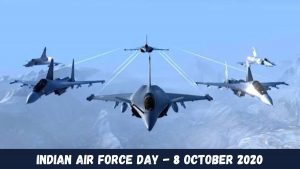
•Indian Air Force Day is celebrated every year by the Indian Air Force on 8th of October. This year Indian Air Force celebrated its 88th anniversary. Indian Air Force was officially established on 8 October 1932 by the British Empire as the Royal Indian Air Force. The name was changed to Indian Air Force in 1950.
•The special occasion will be celebrated with a ceremonial parade and flypast involving a variety of aircraft at the Hindon airbase. IAF’s frontline warplanes like Rafale, Su-30MKI, Apache, Tejas, ‘Gajraj’ will showcase its lethal firepower. 56 aircraft, including 19 fighters and seven transport aircraft along with 19 helicopters, would be taking part in aerial display during this year’s Air Force Day Parade. The Rafale fighter aircraft would fly in the ‘Vijay’ formation along with the Jaguars and then in the ‘Transformer’ formation with the Sukhoi-30 MKI and Light Combat Aircraft (LCA) Tejas fighter aircraft during the IAF Day parade this year.
2) Gujarat govt to launch ‘Digital Seva Setu’ programme
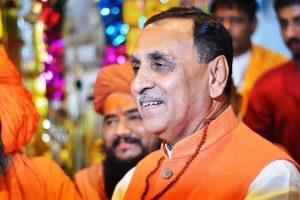
•The state government of Gujarat has announced a ‘Digital Seva Setu’ programme to ensure optimum utilisation of technology for public welfare in rural areas. The program has been initiated under the Centre’s BharatNet Project.
3) GoI launches online startup platform ‘Startup India Showcase’

•The Department for Promotion of Industry and Internal Trade (DPIIT) has launched an online discovery platform for startups called “Startup India Showcase”. The main aim of this website is to make a repository of India’s most promising startups that have proved their capabilities, from across sectors such as fintech, enterprise tech, social impact, health tech, and edutech, among others.
4) Kuwait Prime Minister Sabah Al Khalid Al Sabah Resigns

•The Kuwaiti government, headed by Prime Minister(PM) Sabah Al Khalid Al Sabah submitted its resignation to Emir Nawaf Al Ahmed Al Jaber Al Sabah in anticipation of the upcoming general elections that are due to be held in November 2020. He took charge as the PM in 2019.
5) Smriti Irani launches first ever Brand & Logo for Indian Cotton

•Union Minister of Textiles, Smriti Irani has launched the first-ever Brand and Logo for Indian Cotton on Second World Cotton Day through video conferencing. Now India’s premium cotton would be known as ‘Kasturi Cotton’ in the world cotton trade. The Kasturi Cotton brand will represent Whiteness, Brightness, Softness, Purity, Luster, Uniqueness and Indianness.
6) Russia successfully test-fires Tsirkon hypersonic missile

•Russia successfully test-fired a Tsirkon hypersonic cruise missile in the Arctic. The Missile was fired from the Admiral Gorshkov frigate in the White Sea, Russian Arctic. The missile covered a distance of 450 km with the maximum altitude of its trajectory at 28 km. The flight lasted 4.5 minutes and the missile reached a hypersonic speed of over Mach 8. The Missile is a scramjet-powered manoeuvring anti-ship hypersonic cruise missile.
7) API integration between PM SVANidhi, SBI portal launched
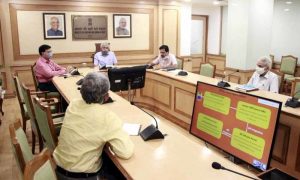
•The Ministry of Housing & Urban Affairs will integrate the application programming interface (API) between SVANidhi portal and various banks to expedite loan sanctioning and disbursement process under Modi government’s PM SVANidhi scheme for nano entrepreneurs.
•To begin with, the ministry launched the API integration between the PM SVANidhi portal and SBI’s eMudra portal. Ministry would perform similar integration with other banks as well for which a consultative meeting will be held shortly.
8) GoI appoints M Rajeshwar Rao as the RBI Deputy Governor

•The Centre has appointed M Rajeshwar Rao as the new deputy governor of the Reserve Bank of India on 7th October 2020. Prior to this, M Rajeshwar Rao was an executive director at RBI. He succeeds NS Vishwanathan as the central bank’s fourth deputy governor. NS Vishwanathan resigned from the post in March 2020 before the completion of his term in June, citing health reasons.
The Central Bank has four Deputy Governors. Other three Deputy Governors of RBI:
•M. D. Patra
•B. P. Kanungo
•M. K. Jain
9) J Venkatramu appointed MD and CEO of India Post Payments Bank

•J Venkatramu has been appointed the managing director and chief executive officer of India Post Payments Bank (IPPB). He will succeed Suresh Sethi, who served the post till March 2020. Venkatramuis presently working as the chief digital officer in Equitas Small Finance Bank. He has been appointed to the post of MD and CEO of IPPB for a period of three years.
10) FM launches Indian Bank’s business mentoring programme ‘MSME Prerana’
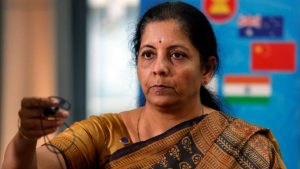
•Finance Minister, Nirmala Sitharaman has launched ”MSME Prerana”, an online business mentoring programme for MSMEs by state-run Indian Bank. The programme, to be made available in local languages, is aimed at empowering entrepreneurs through skill development and capacity building workshops.
11) Nobel Prize in Literature 2020 announced
•The Nobel Prize in Literature for 2020 is awarded to the American poet Louise Glück “for her unmistakable poetic voice that with austere beauty makes individual existence universal”. The Nobel Prize in Literature is awarded by The Swedish Academy, Stockholm, Sweden.
12) Noted Odia Poet Nityananda Nayak to receive Sarala Puraskar
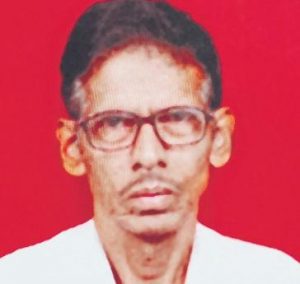
•Noted Odia poet, Nityanand Nayak will be conferred the prestigious Sarala Puraskar for his poetry work ‘Setebelaku Nathiba’, published in 2017. The poet will be felicitated with a cash award of `5 lakh and a citation.
•Two other eminent personalities from the State – Ranjit Kumar Nag and Shyamsundar Pattanaik – will be felicitated for their contribution to fields of music and art respectively. While Nag will be awarded the Ila Panda Sangeet Samman, Pattanaik would be felicitated with Ila Panda Chitrakala Samman. The awards comprise a cash award of `1,50,000 and a citation.
The HINDU Notes – 08th October 2020

📰 Playing catch up in flood forecasting technology
📰 Four for one
UPSC CSE Mains 2020: Detailed Syllabus for GS Paper I (History, Geography & Indian Society)
UPSC IAS Mains General Studies – I Syllabus
History | Modern Indian History India Post Independence World History Art & Culture |
Geography | Indian Geography World Geography |
Indian Society | Social Issues, and Developments in Indian Society |


